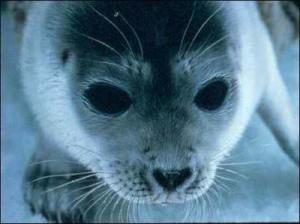The Polar Bear has often been given the role of proverbial environmental canary, coming to prominence in the movie An Inconvenient Truth by former US Vice President Al Gore. But, researchers in Canada have now reported for the first time how high levels of the toxic metal mercury present in certain Arctic seals could also be an indicator of the effects of climate change, hinting at how vanishing sea ice caused by rising temperatures may be to blame. The study provides new insights into the impact of climate change on Arctic marine life.
Gary Stern of the University of Manitoba and the Department of Fisheries and Oceans, in Winnipeg, Canada, and colleagues have reported for the first time that high mercury levels are present in certain Arctic ringed seals (Phoca hispida). They suggest that this growing pollution problem is associated closely with vanishing sea ice caused by global warming, they say.

Researchers are reporting that high mercury levels in Arctic seals appear to be linked to vanishing sea ice caused by global warming. (Credit: NOAA)
The team analysed the mercury content in muscle samples collected by legal hunters from ringed seals between 1973 and 2007. They then compared the levels to the length of the so-called summer ice-free season. This warm period is marked by vanishing sea ice in the seals’ habitat. The team found that the seals accumulated more mercury during both short (two months) and long (five months) ice-free seasons and postulate that this is related to the seals’ food supplies.
Stern and colleagues suggest that higher levels of mercury in seal tissues may track the ice-free seasons. During short ice-free periods, the seals are forced to eat older, and so more highly contaminated Arctic cod. During long ice-free seasons there may be greater productivity in the sea, which means a greater abundance of Arctic cod, but that has the effect of more fish consumption and so also greater exposure to mercury.
The Arctic environment already contains a lot more mercury than the animals there can cope with, Stern explains. However climate change could result in ingested elemental mercury being pushed into highly toxic organometallic forms that are then biomagnified up the food chain. The end result could be that those animals, including polar bears and humans, that eat the seals could accumulate mercury at an even faster rate.
Further reading
Env. Sci. Technol., 2009; in press;
http://dx.doi.org/10.1021/es803293z
Suggested searches
climate change
sea ice